Understanding the World's Most Versatile Spirit
What is vodka? Vodka is a clear, neutral distilled spirit made primarily from water and ethanol, typically containing 40% alcohol by volume. This "little water" - as its Slavic name suggests - is created by fermenting and distilling grains, potatoes, or other agricultural materials, then filtering the result to achieve maximum purity.
Quick Answer:
- Definition: Clear, colorless, and nearly tasteless distilled alcohol
- Main ingredients: Water and ethanol from fermented grains or potatoes
- Alcohol content: Minimum 40% ABV in the US, 37.5% in the EU
- Character: Neutral spirit with minimal flavor or aroma
- Production: Fermentation, distillation, and extensive filtering
The word "vodka" comes from the Russian term "voda," meaning water - a fitting name for this crystal-clear spirit that has become the world's most popular base for cocktails. Unlike whiskey or rum, vodka is designed to be as neutral as possible, making it incredibly versatile for both sipping neat and mixing in drinks.
From its disputed origins in medieval Poland and Russia to its modern role as the backbone of countless cocktails, vodka represents both simplicity and sophistication. Whether made from winter wheat, rye, potatoes, or even more exotic bases like grapes or sugar cane, all vodka shares the same goal: creating the purest possible alcohol.
As Sylwester Skóra, founder of Two Flags Vodka with deep Polish heritage, I've spent years studying what is vodka and perfecting the craft that connects old-world Polish traditions with modern American innovation. My journey from Polish immigrant to premium vodka creator has taught me that understanding vodka's essence is key to appreciating this remarkable spirit.
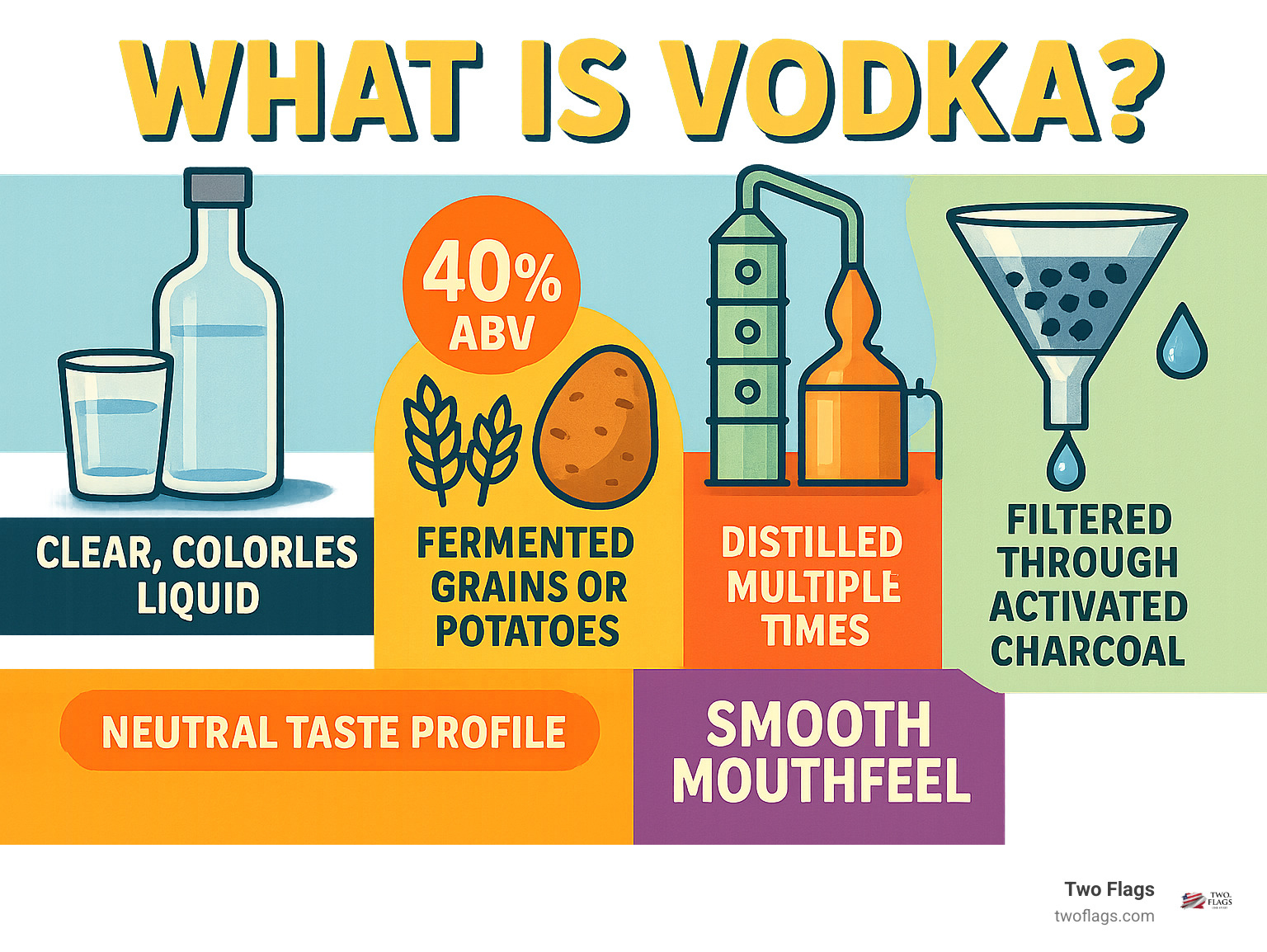
What is vodka? further reading:
- What is neutral spirit?
- How is vodka filtered?
- Best Polish vodka?
What is Vodka? A Look at the "Little Water"
What is vodka? To truly understand this beloved spirit, we need to start with its charming nickname. The word "vodka" comes from the Slavic word "voda," meaning water. Add the diminutive ending, and you get "little water" – a wonderfully poetic name for something that's definitely stronger than it sounds!
This "little water" is beautifully simple at its heart: ethanol and water, combined to create something far greater than the sum of its parts. What makes vodka special is its commitment to neutral character. While whiskey shows off its oak aging and rum flaunts its molasses origins, vodka takes pride in being odorless, colorless, and nearly tasteless.
Don't mistake this neutrality for boring, though. This clean slate approach is exactly what makes vodka the world's most versatile spirit. Whether you're sipping it neat from the freezer (the traditional way) or mixing the perfect martini, vodka's neutral profile lets other flavors shine while providing that perfect alcoholic backbone.
The alcohol content is where things get interesting. Most vodkas clock in at 40% ABV (alcohol by volume), which translates to 80 U.S. proof. Think of ABV as the percentage of your bottle that's pure alcohol – so that bottle is 40% alcohol and 60% water. Proof is simply double the ABV, a system that dates back to old-fashioned testing methods involving gunpowder (yes, really!).
Defining Vodka: What is vodka by law?
You might think vodka's simplicity means anything goes, but governments take this spirit seriously. What is vodka isn't just a philosophical question – it's actually written into law across the globe.
In the United States, the rules are crystal clear. According to the United States Code of Federal Regulations, vodka must be a neutral spirit without distinctive character, aroma, taste, or color. It needs a minimum 40% ABV to earn the vodka name. The TTB (Alcohol and Tobacco Tax and Trade Bureau) doesn't mess around with these standards.
Cross the ocean to Europe, and you'll find the European Union has slightly different ideas. Their minimum drops to 37.5% ABV, giving distillers a bit more flexibility. This might seem like a small difference, but in the spirits world, every percentage point matters for taste and mouthfeel.
These US regulations and European Union regulations exist for good reason – they protect you, the consumer, from getting something that claims to be vodka but doesn't deliver the clean, neutral experience you're expecting.
The Potency and Profile of Vodka
Here's where vodka gets really interesting from a technical standpoint. That standard 80 U.S. proof isn't just a random number – it represents the sweet spot where alcohol by volume delivers potency without overwhelming harshness.
What makes premium vodka special is what's not there. During distillation, unwanted compounds called congeners and fusel oils can sneak into the final product. These little troublemakers are often responsible for harsh flavors and, let's be honest, those regrettable mornings after. Quality vodka production focuses on purity – removing these unwanted guests through careful distillation and filtration.
This pursuit of purity directly impacts mouthfeel and texture. A well-made vodka should glide smoothly across your palate, not burn like fire going down. The best vodkas achieve an almost silky quality that makes them surprisingly sippable neat.
At Two Flags, we're obsessed with this balance. Our ultra-premium, organic approach means every drop delivers that perfect combination of strength and smoothness. For those curious about the nutritional side of things, you can dive deeper into vodka's calorie and carb content at Vodka: Calories, Carbs, and Nutrition Facts.
The beauty of understanding what is vodka lies in appreciating this deceptive simplicity – it takes incredible skill and attention to detail to make something so "simple" taste so extraordinary.
The Spirited History of Vodka: A Tale of Two Nations

When exploring what is vodka, we can't ignore one of the most passionate debates in the spirits world: who invented it first? The story of vodka is truly a tale of two nations, with both Poland and Russia laying fierce claim to being the birthplace of this beloved clear spirit.
The roots of vodka stretch back to the medieval concept of aqua vitae - literally "water of life." These early distilled spirits were quite different from today's smooth vodkas, often cloudy and used primarily for medicinal purposes. Medieval physicians believed these potent elixirs could cure everything from headaches to heartbreak.
Both Poland and Russia developed their own unique approaches to early distillation, creating distinct traditions that would shape vodka production for centuries. While the exact birthplace remains hotly contested, what's clear is that Eastern European ingenuity gave the world this remarkable spirit that would eventually become the foundation for countless cocktails and celebrations.
Polish Origins
Poland holds what many consider the strongest historical claim to vodka's invention. The first written mention of the word wódka appeared in 1405 in the Akta Grodzkie (recorder of deeds), finded in court documents from the Palatinate of Sandomierz. This makes Poland's documentation of vodka more than 600 years old!
Initially, Polish wódka served as medicine rather than recreation. By 1534, Stefan Falimierz, a Polish alchemist and physician, was making bold claims about vodka's powers, suggesting it could "increase fertility and awaken lust." Talk about early marketing!
As centuries passed, Polish vodka production became increasingly sophisticated. Distilleries refined their techniques, perfected their ingredients, and liftd vodka from a folk remedy to a refined spirit. The importance of vodka to Polish culture became so significant that in 1925, the production of clear vodkas became a Polish government monopoly.
This rich heritage runs deep in our veins at Two Flags. As a Polish-American family business, we're proud to carry forward these ancient traditions, crafting our ultra-premium vodka with the same dedication to quality that Polish distillers have maintained for over six centuries.
Russian Heritage
Russia's vodka story is equally compelling, beginning when Genoese ambassadors brought the first aqua vitae to Moscow in 1386 during the 14th century. This introduction of distilled spirits to Russia would change the nation's drinking culture forever.
By the 16th century, vodka consumption had spread throughout Russia like wildfire. The spirit became so integral to Russian life that it transformed into a major source of state revenue during Tsarist Russia. At its peak, taxes on vodka production and sales provided up to 40% of government income - imagine funding an entire empire with one spirit!
The cultural significance of vodka in Russia cannot be overstated. Traditional drinking traditions evolved around vodka, with elaborate toasting rituals and specific food pairings. By 1911, vodka comprised an astounding 89% of all alcohol consumed in Russia, cementing its place as the nation's drink of choice.
This deep cultural embedding shows how vodka became more than just a beverage - it became a way of life, shaping celebrations, business dealings, and social gatherings across the vast Russian landscape.
From Field to Bottle: The Vodka Production Process

The journey of vodka, from humble raw materials in the field to the crystal-clear spirit in our glass, is a fascinating process of change and purification. It involves several key stages: the selection of raw materials, fermentation, distillation, and finally, filtration and bottling. Each step is crucial in crafting a spirit that lives up to its reputation for purity and versatility.
What is vodka made from? The Core Ingredients
The foundation of any great vodka lies in its primary ingredients: a fermentable base and water. Traditionally, what is vodka made from has varied across regions, primarily relying on locally available agricultural products.
Historically, cereal grains and potatoes have been the most common sources. In Russia and Poland, cereal grains like rye and wheat were traditionally employed. As production evolved, potatoes also became increasingly used in these countries and others.
Today, the range of base ingredients has expanded significantly. While most vodka is produced from grains such as sorghum, corn, rye, or wheat, modern brands also experiment with a diverse array of other materials, including maize, sugar cane, various fruits, honey, and even maple sap. In the United States, many vodkas are made from 95% pure grain alcohol, which is then diluted and purified.
The choice of base ingredient subtly influences the final character of the vodka, imparting nuanced flavor profiles and mouthfeel. However, another critical component is water. Given that vodka is composed mainly of water and ethanol, the quality and purity of the water used are paramount. Distilleries often source water from pristine springs or employ advanced purification techniques to ensure it is free from impurities that could affect the spirit's taste.
| Base Ingredient | General Characteristics |
|---|


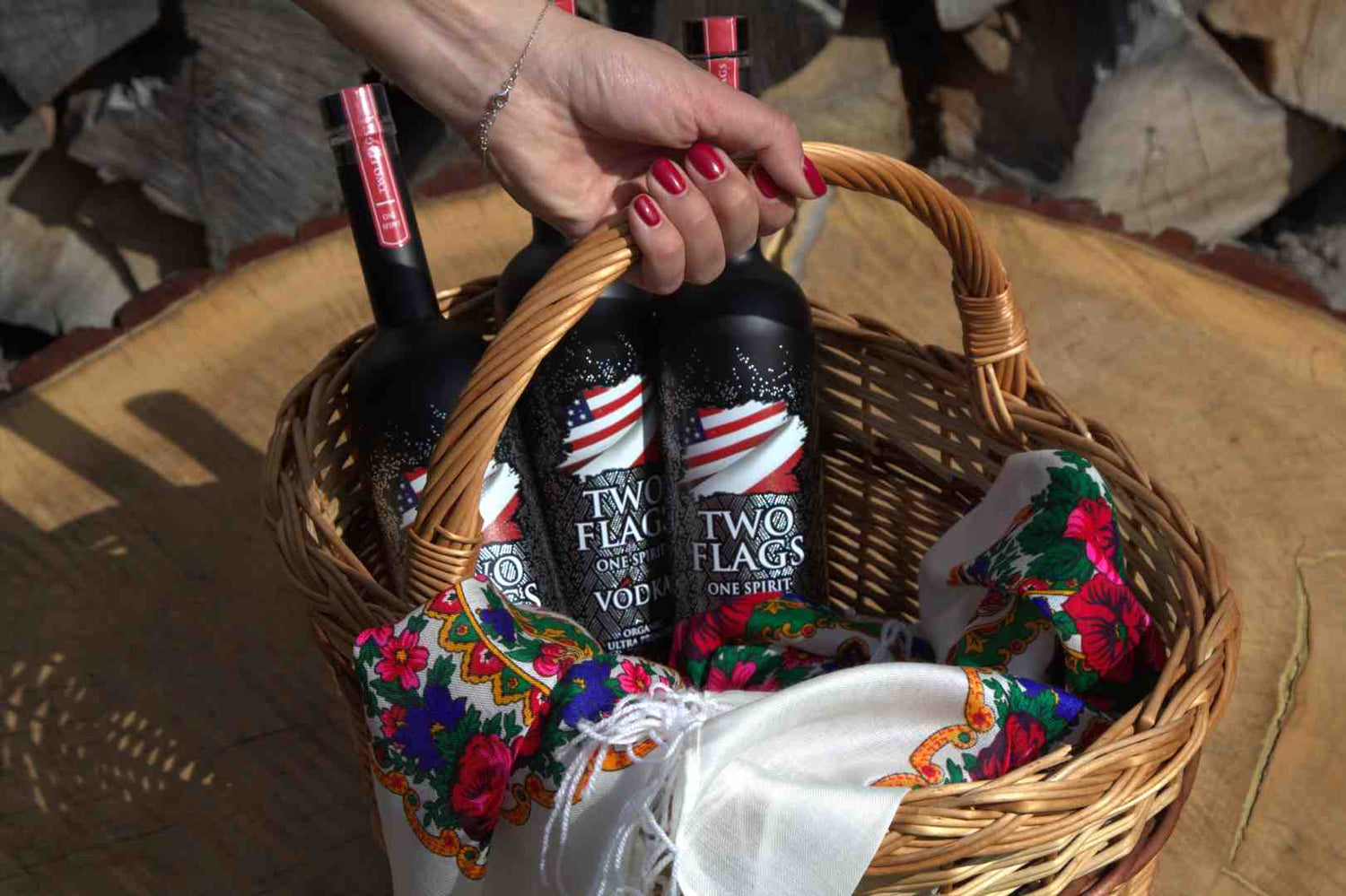

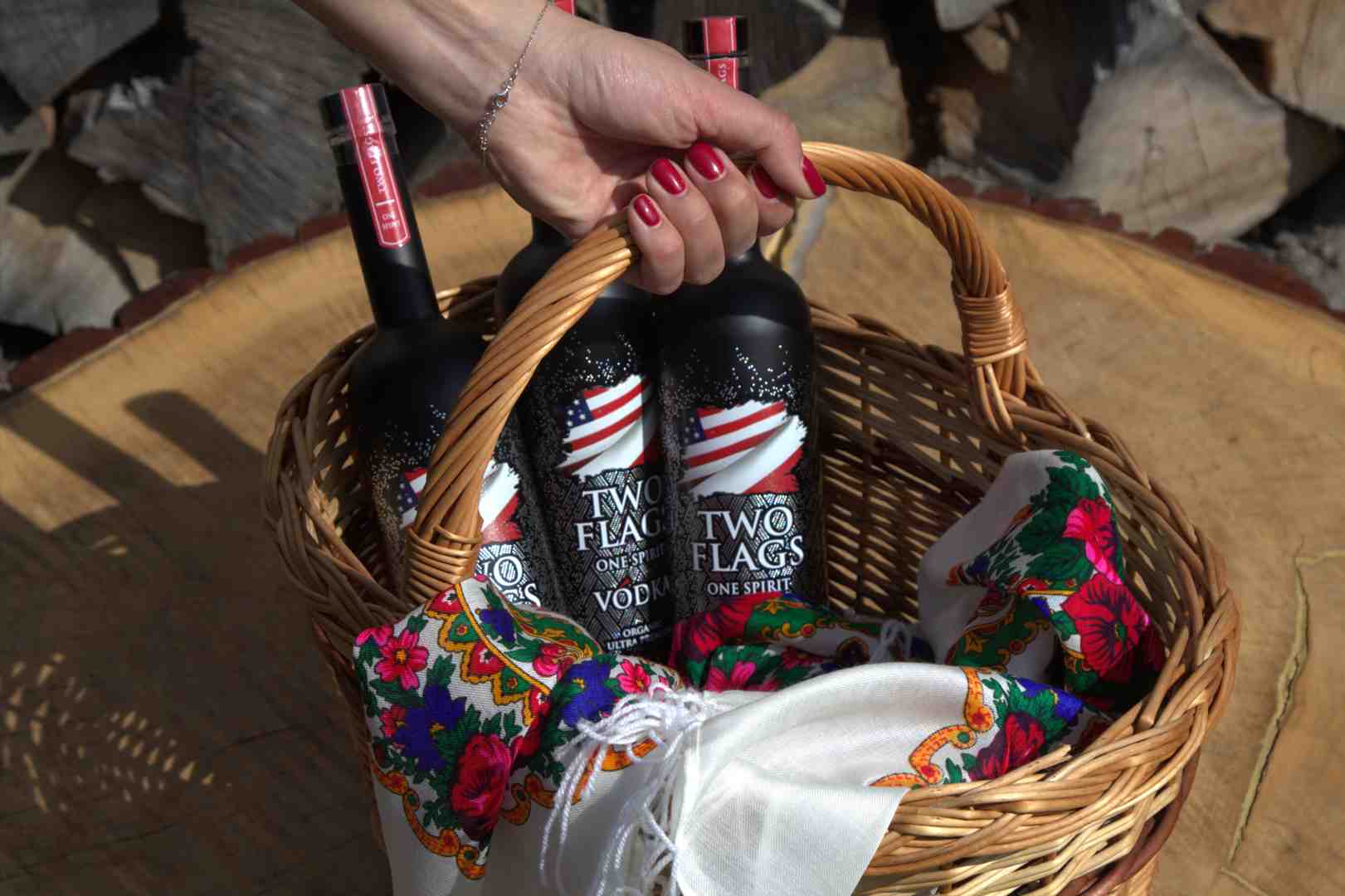
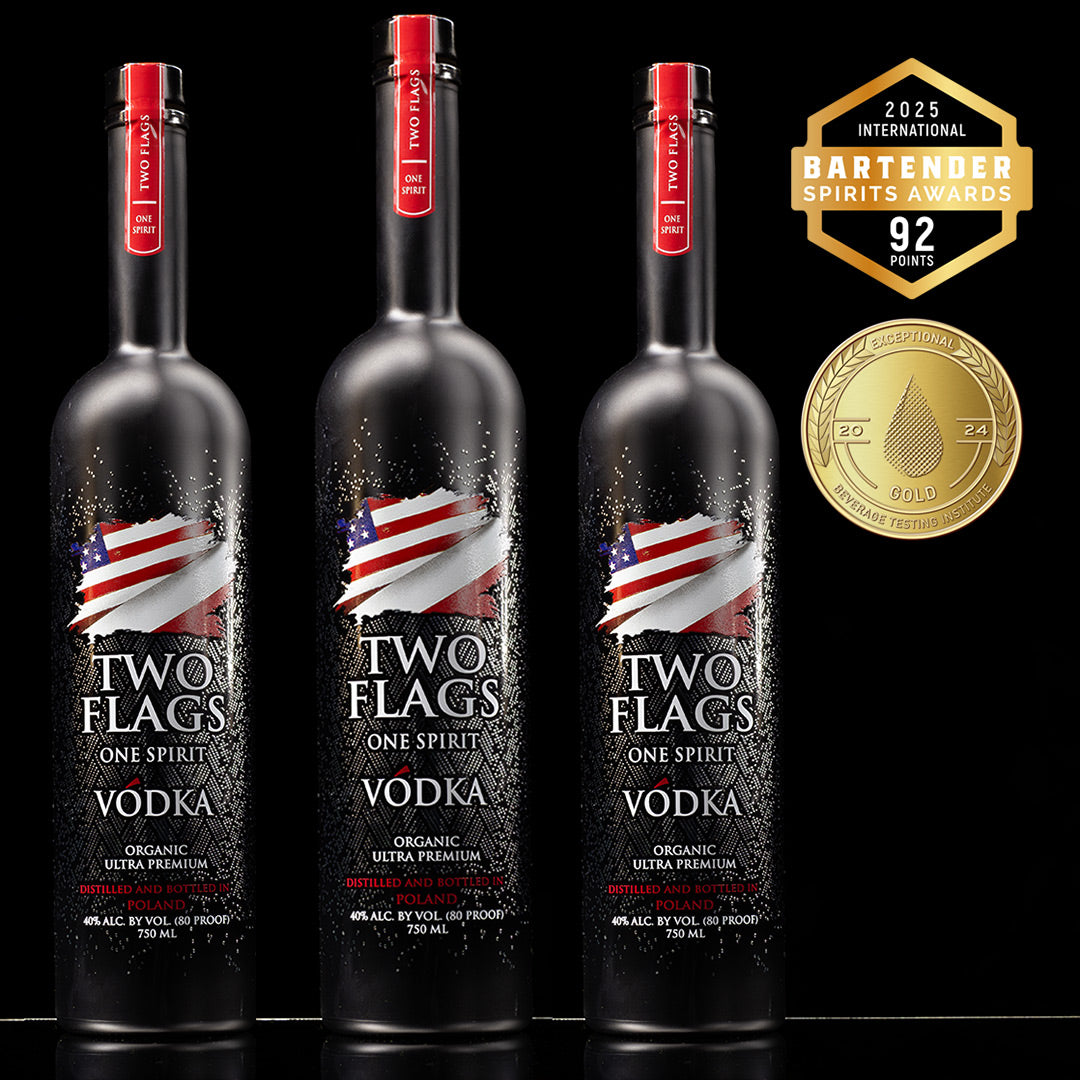
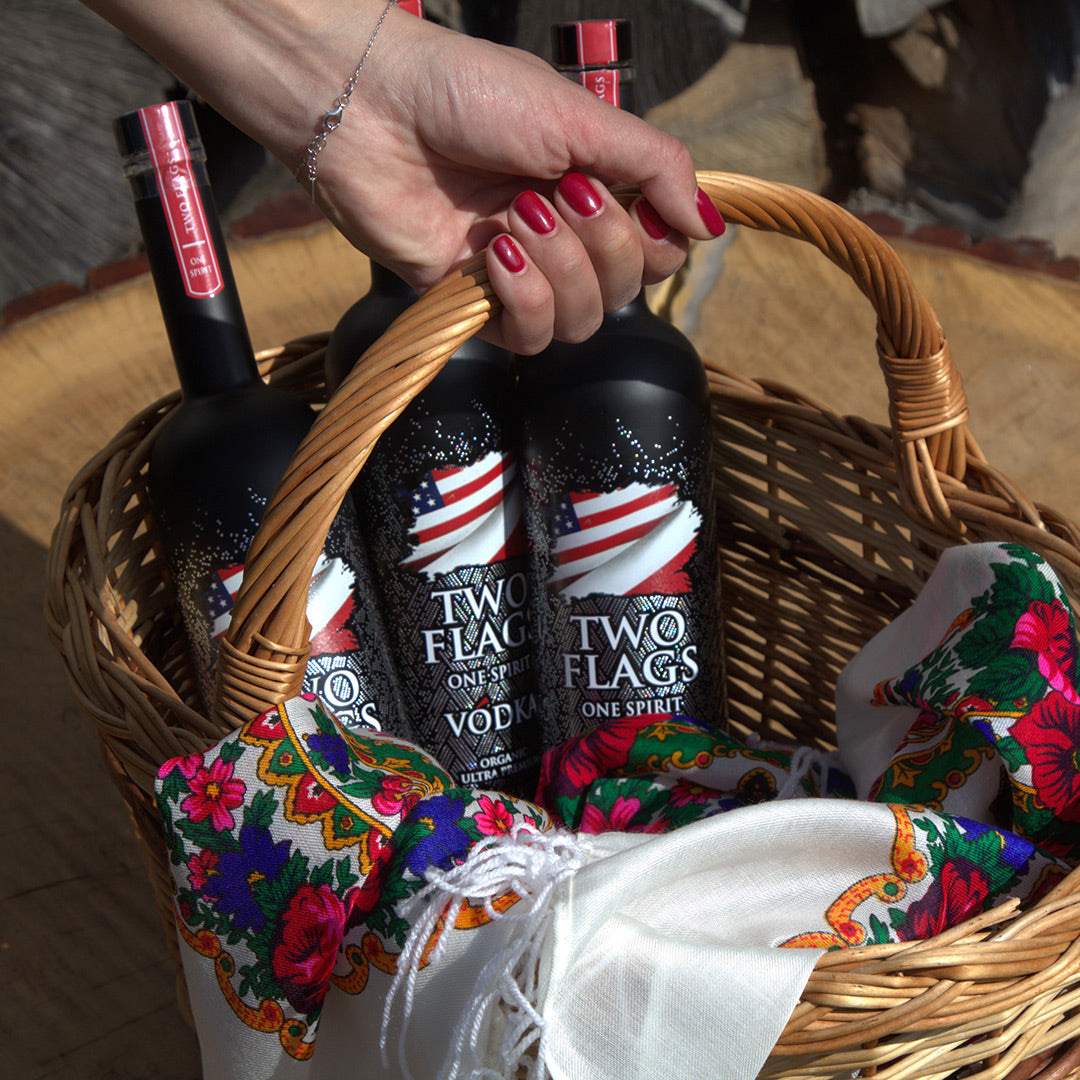
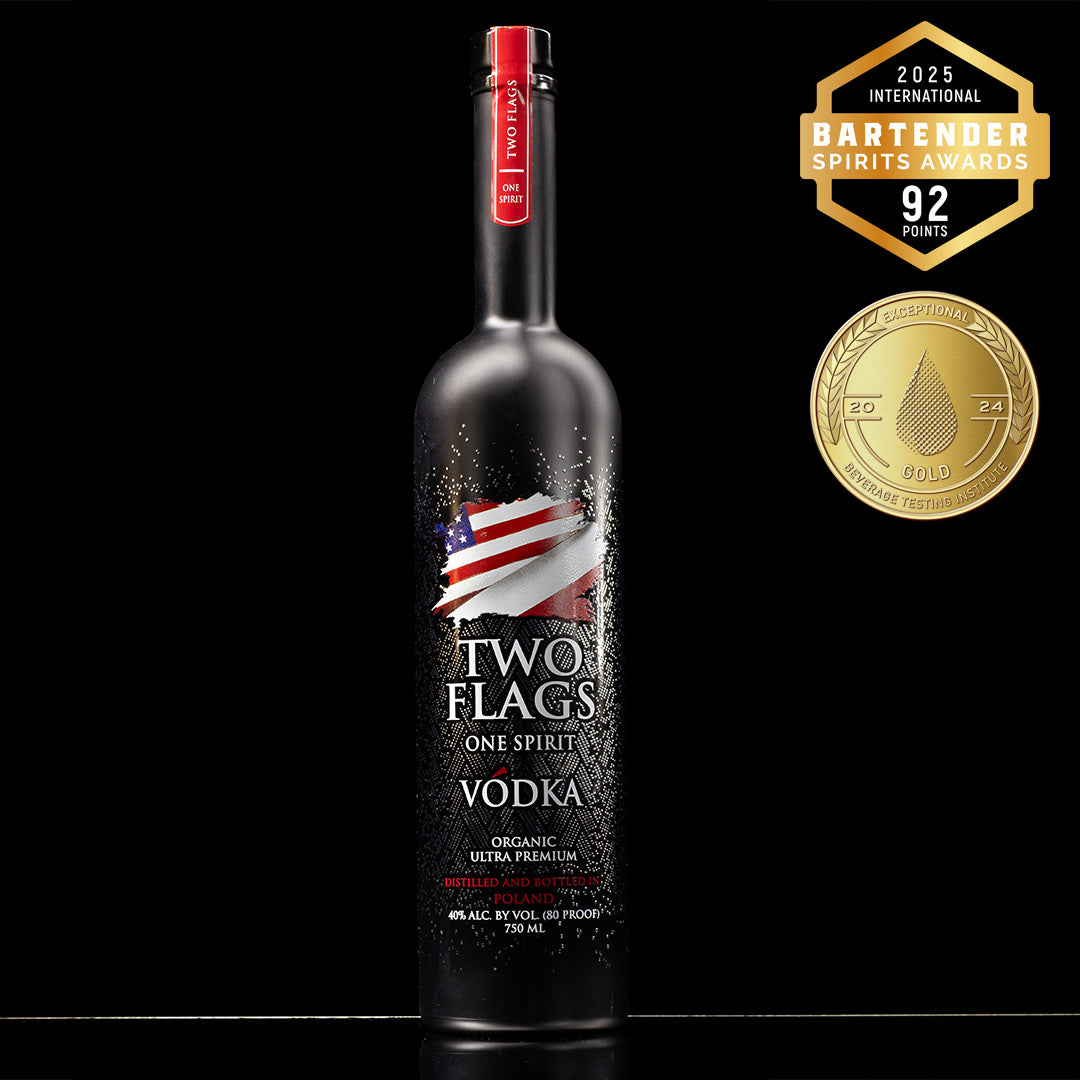
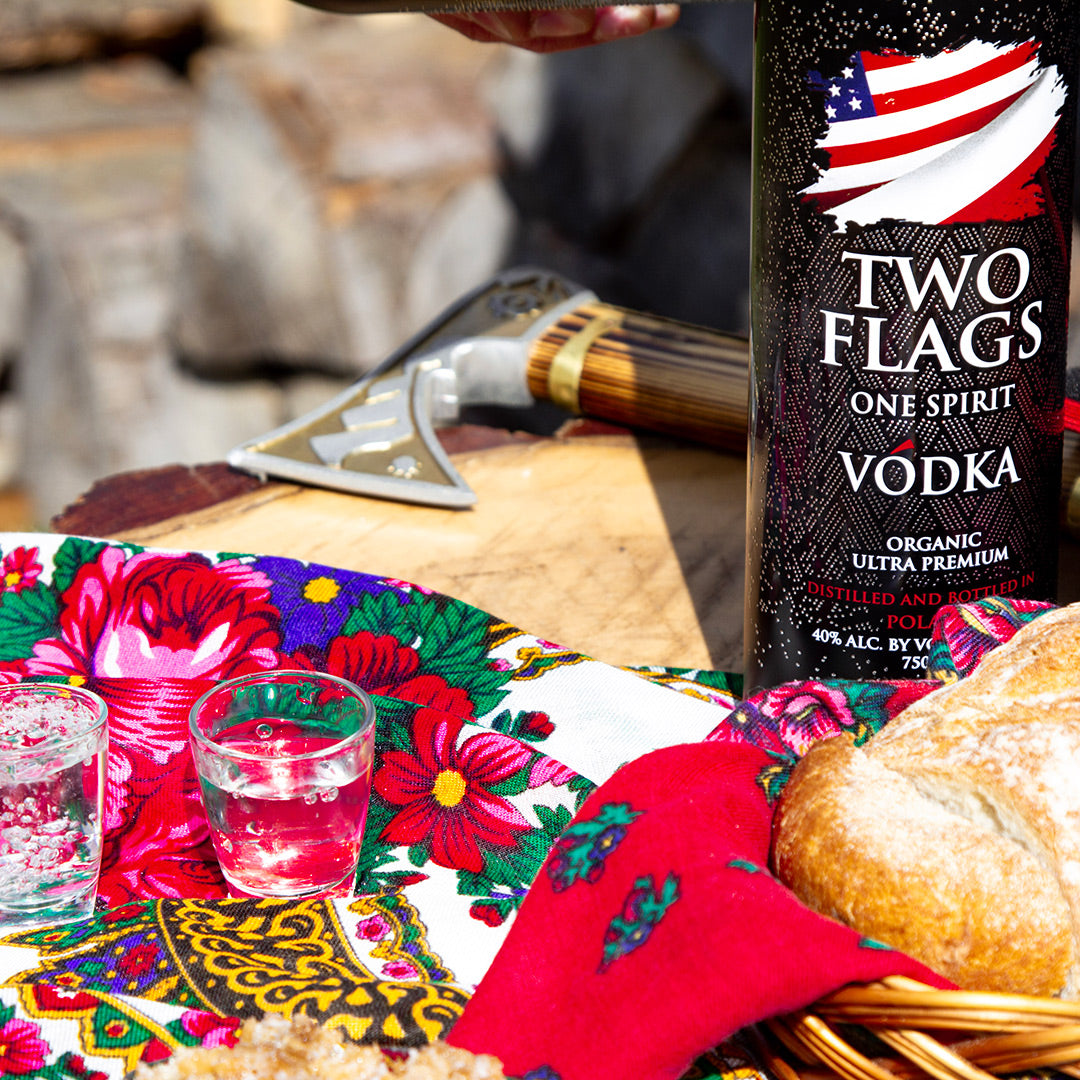
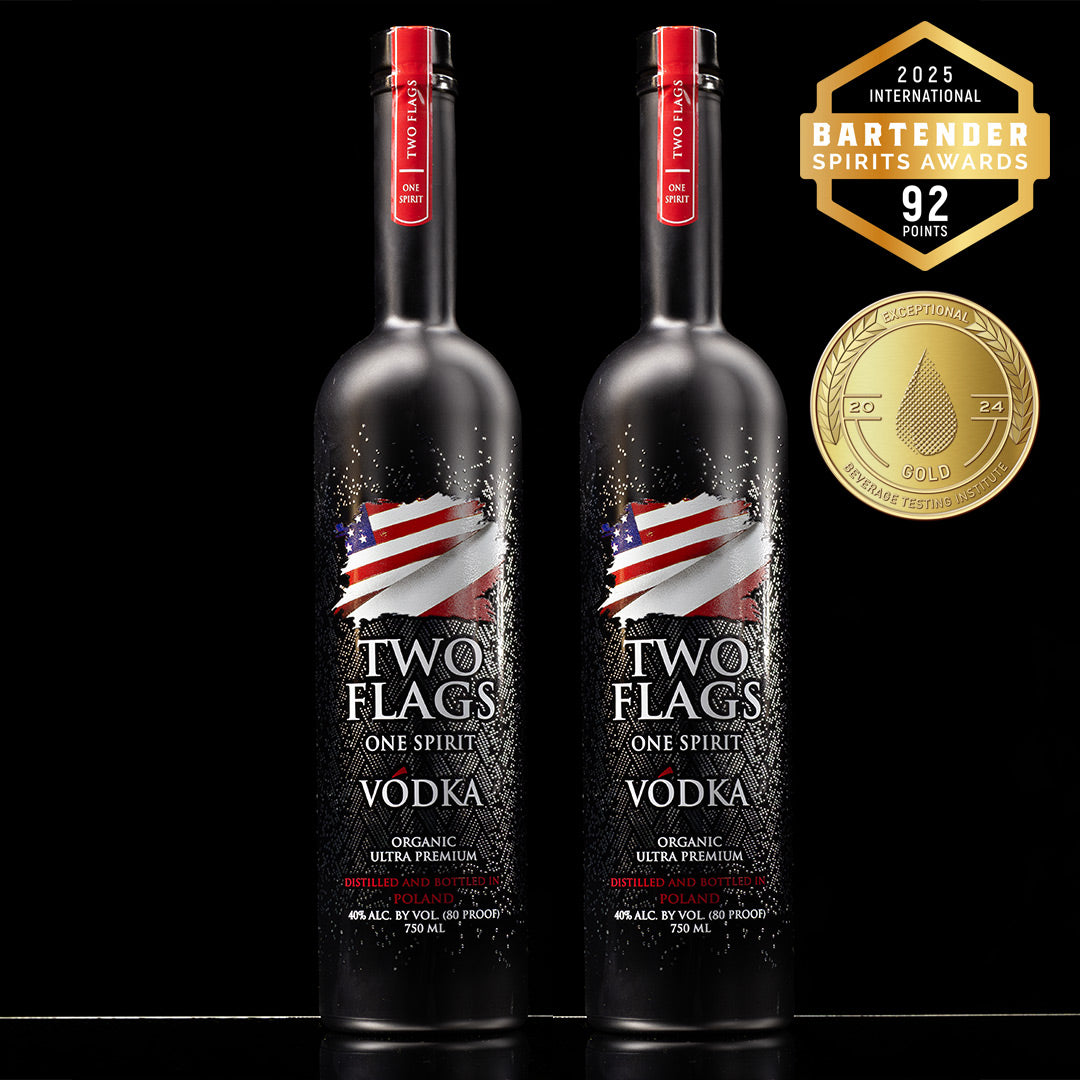
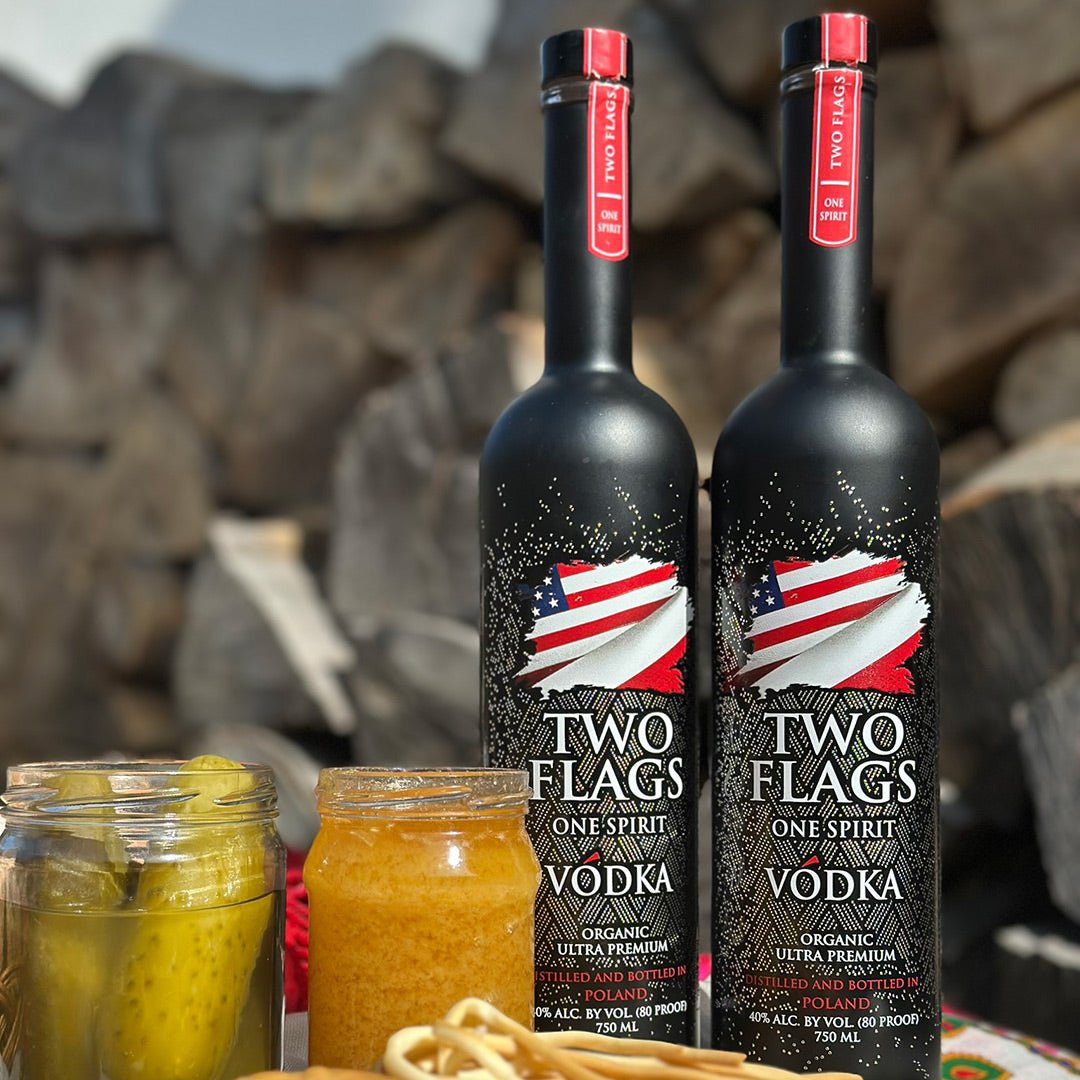
Zostaw komentarz
Ta strona jest chroniona przez hCaptcha i obowiązują na niej Polityka prywatności i Warunki korzystania z usługi serwisu hCaptcha.